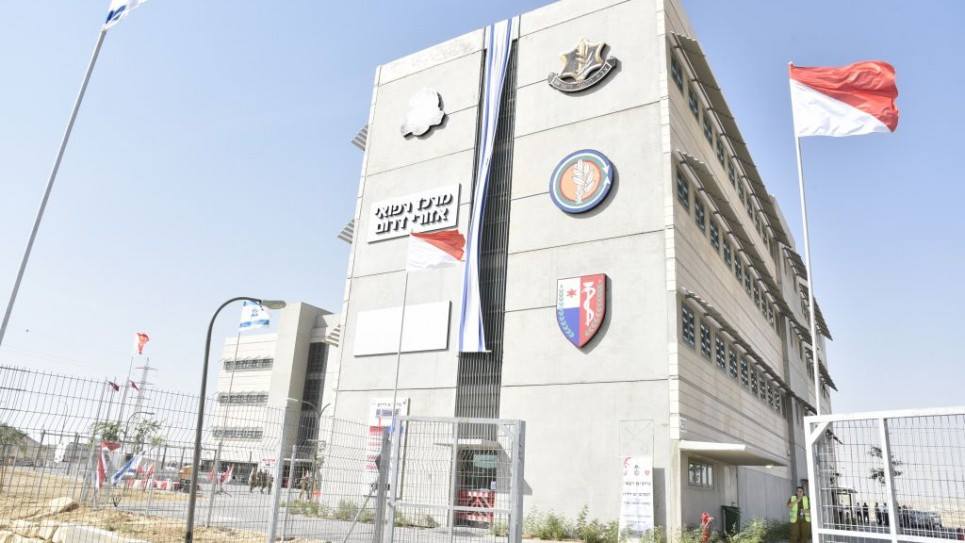Israeli Army Opens New Medical Center In Southern Israel
Thanks to Israel First
Israeli Army Opens New Medical Center In Southern Israel; As IDF Moves Its Operations To The Negev, A Newly Commissioned State-of-The-Art Medical Center Was Within A Week Seeing Hundreds of Patients Every Day July 2017. A large, state-of-the-art medical center to treat soldiers opened its doors in southern Israel last month, a necessary component in the military’s multi-year plan to migrate much of its operations to the largely uninhabited and under-resourced Negev desert.
The newly constructed Southern Regional Medical Center, known in Hebrew by the acronym Marpe-Darom, opened its doors on July 9, and within a week was seeing hundreds of patients each day, according to the center’s commander Maj. Galit Bidner. It was built on the army’s sprawling Training Campus, known in Hebrew as the Kiryat Hadracha, or more commonly as Ir Habahdim, the “City of Training Bases,” which is located south of the city of Beersheba, near the town of Yeruham.
The Training Campus, which is home to thousands of soldiers, is the crown jewel of the army’s push to move south. By moving the army’s training bases from the center of the country to the Negev, Israel hoped to streamline their operation, free up real estate near the central cities and breathe life into the south. ‘There are lots of new soldiers, much of the IDF has moved south’ However, as the IDF moved thousands of soldiers to the Negev desert, added strain was put on the previous facilities of the Southern Regional Medical Center.
“There are lots of new soldiers, much of the IDF has moved south. All the training bases are [now] located in the Training Campus,” said Bidner, a nurse by training. In IDF Ombudsman Maj. Gen. (res.) Yithak Brik’s latest annual report for 2016, he found the army’s medical system to have significant technological failings, despite the IDF being considered one of the more advanced militaries in the world. “Once of the most significant gaps, which harms the quality of the medical services provided by the IDF today, is the technological gap,” the ombudsman wrote in his 2017 report.
According to Bidner, the new Southern Regional Medical Center will be “much bigger, much newer and much more technologically advanced than what we had.” The new building is made up of two wings, each with four floors. Hundreds of doctors, nurses and staff work inside, treating between 600 and 800 people each day, on average, but with the capacity to see some 1,500 patients per day.
“It’s going to improve both the quality of the care and the variety of care,” Bidner said. “It also looks better; it doesn’t look old and moldy.” The major offered as an example the center’s X-ray machine, which uses digital plates instead of analog film, allowing operators to work more quickly. “This will be one of the few digital radiography X-ray machines in the country with resolution like this. It’s much faster and much higher quality,” she said.
The funding for the new medical center came in part from a donation by French art dealer Ignace Hellenberg, a Holocaust survivor who left his fortune to Israel when he died in 2004. The more than NIS 200 million ($56 million) that Hellenberg left the state, one of the largest inheritances ever bequeathed to Israel, was earmarked for six medical centers for soldiers. According to Bidner, approximately a third of the NIS 60 million ($16.8 million) spent on the Southern Regional Medical Center thus far came from Hellenberg’s estate, with the Defense Ministry paying the rest.









